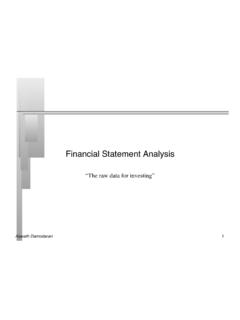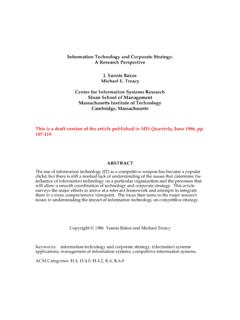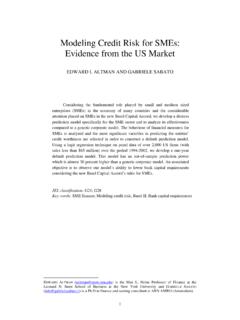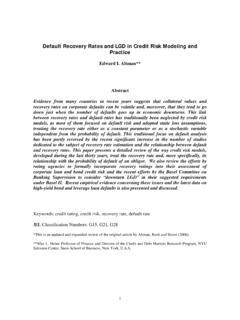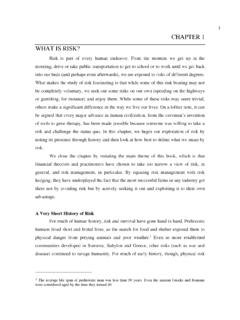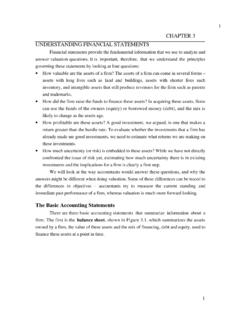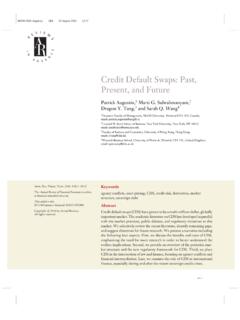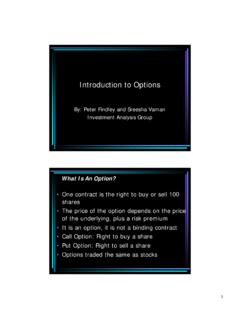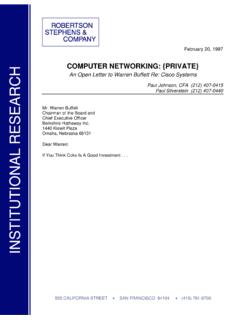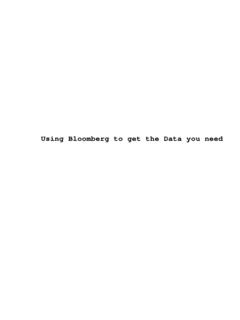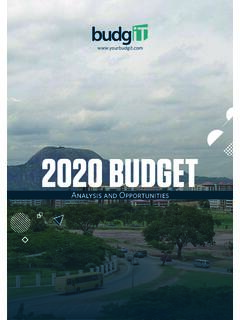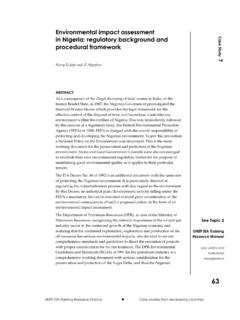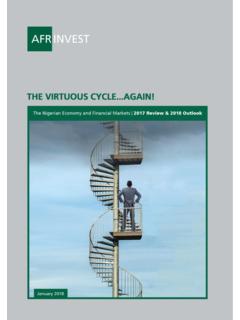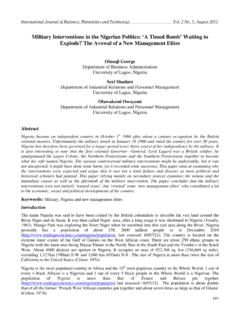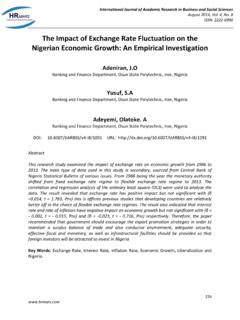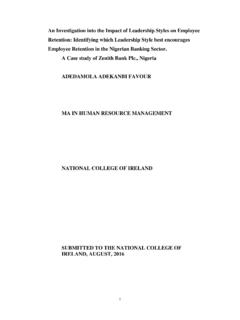Transcription of DISCOUNT RATES - New York University
1 Aswath Damodaran 20. DISCOUNT RATES . The D in the Estimating Inputs: DISCOUNT RATES 21. While DISCOUNT RATES obviously matter in DCF valuation, they don't matter as much as most analysts think they do. At an intuitive level, the DISCOUNT rate used should be consistent with both the riskiness and the type of cashflow being discounted. Equity versus Firm: If the cash flows being discounted are cash flows to equity, the appropriate DISCOUNT rate is a cost of equity. If the cash flows are cash flows to the firm, the appropriate DISCOUNT rate is the cost of capital.
2 Currency: The currency in which the cash flows are estimated should also be the currency in which the DISCOUNT rate is estimated. Nominal versus Real: If the cash flows being discounted are nominal cash flows ( , reflect expected inflation), the DISCOUNT rate should be nominal Aswath Damodaran 21. Risk in the DCF Model 22. Relative risk of Equity Risk Premium Risk Adjusted Risk free rate in the company/equity in X. Cost of equity =. currency of analysis + questiion required for average risk equity Aswath Damodaran 22.
3 Not all risk is created equal . 23. Estimation versus Economic uncertainty Estimation uncertainty reflects the possibility that you could have the wrong model or estimated inputs incorrectly within this model. Economic uncertainty comes the fact that markets and economies can change over time and that even the best models will fail to capture these unexpected changes. Micro uncertainty versus Macro uncertainty Micro uncertainty refers to uncertainty about the potential market for a firm's products, the competition it will face and the quality of its management team.
4 Macro uncertainty reflects the reality that your firm's fortunes can be affected by changes in the macro economic environment. Discrete versus continuous uncertainty Discrete risk: Risks that lie dormant for periods but show up at points in time. (Examples: A drug working its way through the FDA pipeline may fail at some stage of the approval process or a company in Venezuela may be nationalized). Continuous risk: Risks changes in interest RATES or economic growth occur continuously and affect value as they happen.
5 Aswath Damodaran 23. Risk and Cost of Equity: The role of the marginal investor 24. Not all risk counts: While the notion that the cost of equity should be higher for riskier investments and lower for safer investments is intuitive, what risk should be built into the cost of equity is the question. Risk through whose eyes? While risk is usually defined in terms of the variance of actual returns around an expected return, risk and return models in finance assume that the risk that should be rewarded (and thus built into the DISCOUNT rate) in valuation should be the risk perceived by the marginal investor in the investment The diversification effect.
6 Most risk and return models in finance also assume that the marginal investor is well diversified, and that the only risk that he or she perceives in an investment is risk that cannot be diversified away ( , market or non-diversifiable risk). In effect, it is primarily economic, macro, continuous risk that should be incorporated into the cost of equity. Aswath Damodaran 24. The Cost of Equity: Competing Market Risk Models 25. Model Expected Return Inputs Needed CAPM E(R) = Rf + b (Rm- Rf) Riskfree Rate Beta relative to market portfolio Market Risk Premium APM E(R) = Rf + Sbj (Rj- Rf) Riskfree Rate; # of Factors.
7 Betas relative to each factor Factor risk premiums Multi E(R) = Rf + Sbj (Rj- Rf) Riskfree Rate; Macro factors factor Betas relative to macro factors Macro economic risk premiums Proxy E(R) = a + S bj Yj Proxies Regression coefficients Aswath Damodaran 25. Classic Risk & Return: Cost of Equity 26. In the CAPM, the cost of equity: Cost of Equity = Riskfree Rate + Equity Beta * (Equity Risk Premium). In APM or Multi-factor models, you still need a risk free rate, as well as betas and risk premiums to go with each factor.
8 To use any risk and return model, you need A risk free rate as a base A single equity risk premium (in the CAPM) or factor risk premiums, in the the multi-factor models A beta (in the CAPM) or betas (in multi-factor models). Aswath Damodaran 26. 27 DISCOUNT RATES : I. The Risk Free Rate Aswath Damodaran The Risk Free Rate: Laying the Foundations 28. On a riskfree investment, the actual return is equal to the expected return. Therefore, there is no variance around the expected return. For an investment to be riskfree, then, it has to have No default risk No reinvestment risk It follows then that if asked to estimate a risk free rate: 1.
9 Time horizon matters: Thus, the riskfree RATES in valuation will depend upon when the cash flow is expected to occur and will vary across time. 2. Currencies matter: A risk free rate is currency-specific and can be very different for different currencies. 3. Not all government securities are riskfree: Some governments face default risk and the RATES on bonds issued by them will not be riskfree. Aswath Damodaran 28. Test 1: A riskfree rate in US dollars! 29. In valuation, we estimate cash flows forever (or at least for very long time periods).
10 The right risk free rate to use in valuing a company in US dollars would be a. A three-month Treasury bill rate ( ). b. A ten-year Treasury bond rate (2%). c. A thirty-year Treasury bond rate (3%). d. A TIPs (inflation-indexed treasury) rate (1%). e. None of the above What are we implicitly assuming about the US treasury when we use any of the treasury numbers? Aswath Damodaran 29. Test 2: A Riskfree Rate in Euros 30. Euro Government Bond RATES - January 1, 2016. Aswath Damodaran 30. Test 3: A Riskfree Rate in Indian Rupees 31.
